Technology in action: How embracing digital dentistry opens up possibilities
Mike Zuber explores how digital technology impacts his ability to deliver great results for his dental clients and for patients.
Dental laboratories were some of the first facilities to adopt computer-aided design/computer-aided manufacturing (CAD/CAM) technology. As such, lab technicians have always been the go-to experts when handling digital impressions.
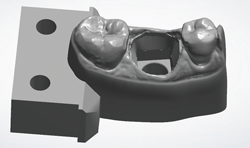
However-despite the benefits of improved accuracy-early systems were cumbersome, needed messy powders and sprays and required a model to be printed for every impression. While my lab has been accepting digital impressions for 15 years, it’s only within the past four-to-five years that newer systems and enhanced features have made accepting digital impressions an undoubtedly beneficial business decision.
[Editor's note: The following pages show how technology is changing dentistry, and is accompanied by a sample case. Read how the digital workflow is shifting expectations as you follow a digital case.]
Next page: Open versus closed systems ...

Fig. 1 Digital impression with crown designed.
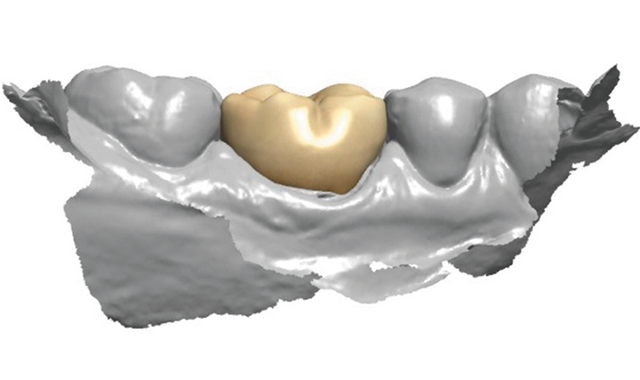
Fig. 1 Digital impression with crown designed.
Open vs. closed systems
The turning point for me came when we started working more with an open system, in particular, Carestream Dental’s CS 3500 intraoral scanner. It’s so important for us to be able to work with STL files without click fees or the extra steps of converting the files. Closed systems typically require proprietary computers and software, which are more expensive for dental labs. An open system, on the other hand, gives us the ability to design the crown or abutment in-house using any number of software programs and either use an in-office milling machine or send the case out to a different milling center.
Fig. 2 Opposing digital impression.
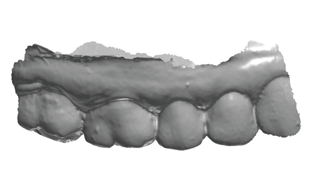
Fig. 3 Upper and lower impression with bite and crown designed.
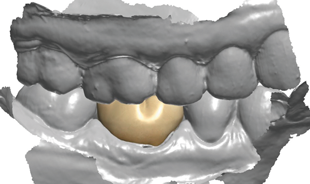


Fig. 4 Digital impression with prep.
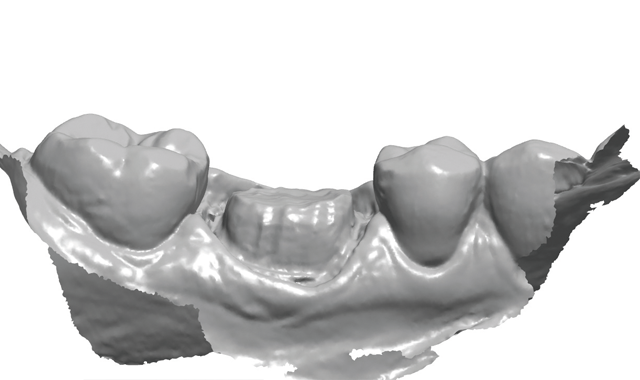
Fig. 4 Digital impression with prep.
Increased accuracy
As a rule, digital tools guarantee a higher degree of accuracy. For implants, that means getting the rotation, angle and height of the abutment perfect; for restorations, it means faultless occlusal clearance and contacts. I believe we’ve only made a few remakes in the past few years since we’ve started using more advanced digital systems. This high level of accuracy is also crucial for ensuring more predictable outcomes when planning implants. For example, if we are sent a digital impression and a CBCT volume, we’re able to merge the datasets in order to fabricate a highly accurate surgical guide. This gives doctors the confidence to offer their patients more advanced procedures-and our lab the opportunity to bring in more business.
Fig. 5 Digital impression with upper and lower, with bite and prep.
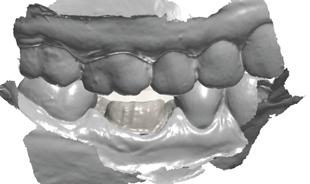
Fig. 6 Final designed crown.
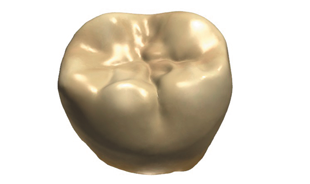


Fig. 8 Model designed.

Fig. 7 Model designed.
Enhanced communication
How do I measure the accuracy of our restorations? By communicating with our clients: We keep in close contact with doctors to make sure they’re happy with the final restoration. Believe me, if there were an issue with the seat of a crown, the doctor would let us know. Thankfully, the speed of digital also contributes to keeping the lines of communication open with our doctors. Because the digital impression can be quickly and easily uploaded to the lab via secure web portal, some lab techs even offer to confirm the accuracy of a scan over the phone while the patient is still in the chair. The lab tech can catch any possible mistakes or missed data so the patient doesn’t have to be recalled for a retake; it really helps to forge a partnership between the doctor and lab.


Fig. 8 Printed model.

Fig. 8 Printed model.
Fig. 9 Printed working model.

Fig. 9 Printed working model.
Typical digital workflow
At our lab, we have digital jobs backed up like jets on a runway-someone is scanning, designing or processing digital impressions all day long. In fact, digital now makes up 30-40 percent of our workflow. Let’s say we’re designing an abutment. The digital impression is shared with us. The scan body is already in place. The abutment can be designed in anywhere from 15-45 minutes. It’s then sent to either a milling facility or an in-office milling machine. Even if the abutment is sent to a milling facility, it’s typically returned to us in less than 48 hours. Compare the digital workflow to that of traditional dentistry, where we wouldn’t even be able to start on the abutment until the physical model had arrived in the mail-and that’s if the model wasn’t broken during shipping.


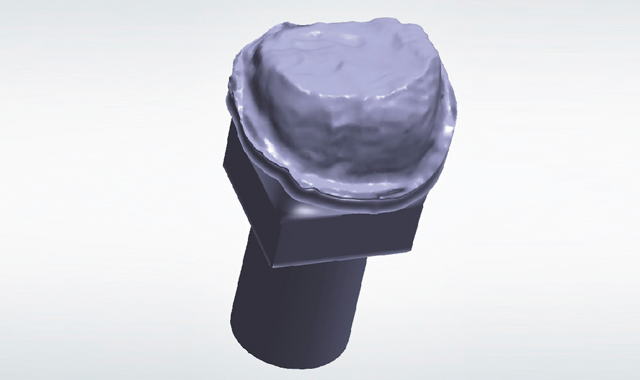
Fig. 10 Printed working die.
Fig. 11 Printed model articulated.
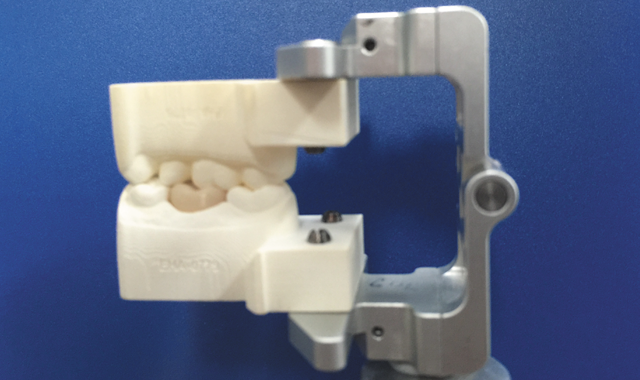
Fig. 11 Printed model articulated.
What’s next for digital?
As younger doctors graduate and enter the workforce, and the price of scanners continues to drop, I have no doubt we’ll see digital impressions take more share in the industry. Not only has digital become more cost-effective, but the latest technology makes communication between doctors and labs even more efficient. For example, full HD 3D color impressions better reflect the in-vivo anatomy of the patient; it’s like seeing exactly what the doctor sees. Such high-definition images also aid with margin line identification, which leads to more accurate restorations. The increased accuracy of digital will also contribute to more intraoral scanner and CBCT files being merged for the purpose of fabricating surgical guides as prosthetic-driven implant planning-or, planning from the crown down-becomes more popular among doctors.
The list: 5 reasons to use digital impressions
The concept of digital impressions may not be new to the seasoned lab tech-after all, labs were the original dental CAD/CAM experts when the technology was first introduced in the 1970s and 80s. However, the demand for intraoral scanners is growing among doctors, and the latest technological advancements make accepting digital impressions easier than ever. With the technology and demand to support it, not to mention the guaranteed accuracy that improves final results, digital impressions are the future of the lab industry.

Fig. 12 Printed model articulated with finished crown.

Fig. 12 Printed model articulated with finished crown.